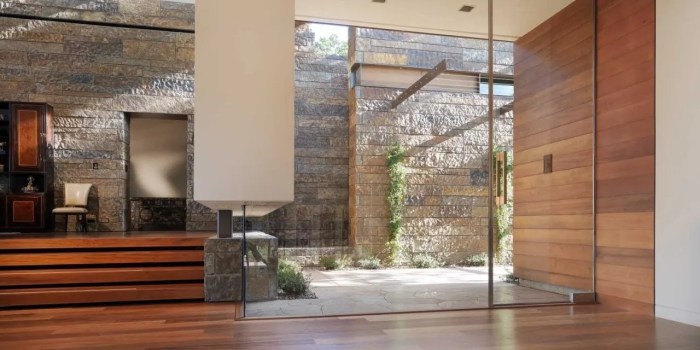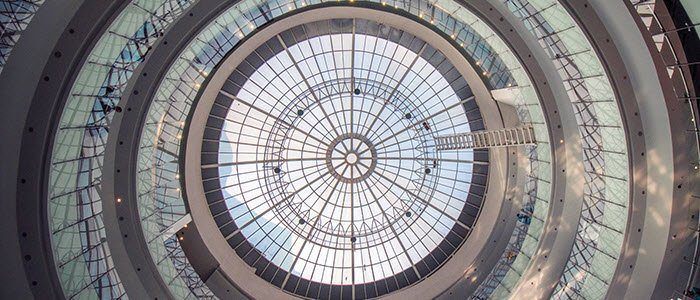Earth houses are predominantly illuminated with natural light – Earth houses, with their unique architectural designs, offer a fascinating case study in the utilization of natural light for illumination. This exploration delves into the innovative strategies employed in earth houses to maximize natural lighting, examining its benefits, design considerations, and impact on energy efficiency and well-being.
Natural Light Sources

Earth houses are designed to maximize natural light, reducing the need for artificial illumination. Their architecture incorporates several features that facilitate natural illumination, including:
Large Windows and Skylights
- Earth houses often feature large windows and skylights that allow ample daylight to enter the interior spaces.
- The placement of windows and skylights is carefully considered to capture sunlight at different times of the day and throughout the year.
Open Floor Plans
- Open floor plans create a sense of spaciousness and allow natural light to penetrate deeper into the house.
- By eliminating unnecessary walls and partitions, earth houses ensure that daylight reaches even the interior rooms.
Reflective Surfaces
- Earth houses often incorporate reflective surfaces, such as whitewashed walls or polished floors, to bounce natural light around the interior.
- These surfaces help distribute light more evenly and reduce the need for additional lighting fixtures.
Benefits of Natural Light
- Natural light improves mood and well-being, reduces stress, and boosts productivity.
- It helps regulate the body’s circadian rhythm, promoting better sleep patterns.
- Natural light also reduces glare and eye strain, creating a more comfortable and inviting indoor environment.
Lighting Strategies

To further enhance natural light in earth houses, various lighting strategies are employed:
Artificial Lighting as Supplement
- Artificial lighting is used sparingly in earth houses, primarily as a supplement to natural light during low-light conditions.
- Lighting fixtures are carefully chosen to complement natural illumination, such as recessed lighting or indirect lighting.
Dimmers and Sensors
- Dimmers allow for adjusting the intensity of artificial light, ensuring that it does not overpower natural light.
- Motion sensors can be used to automatically turn on lights when needed, reducing energy consumption.
Window Placement and Orientation
- The placement and orientation of windows significantly impact natural light levels.
- Windows are typically positioned on the southern or eastern side of the house to capture maximum sunlight.
- Overhangs or awnings can be used to control the amount of sunlight entering the house, preventing overheating in summer.
Energy Efficiency
Natural light in earth houses contributes to energy efficiency in several ways:
Reduced Lighting Costs
- By relying heavily on natural light, earth houses significantly reduce the need for artificial lighting.
- This can result in substantial savings on energy bills over time.
Thermal Insulation
- Windows and skylights in earth houses are often double- or triple-glazed, providing excellent thermal insulation.
- This helps maintain a comfortable indoor temperature, reducing the need for heating or cooling systems.
Case Study
- A study conducted by the University of California, Berkeley, found that earth houses can reduce lighting energy consumption by up to 75% compared to conventional homes.
- The study also showed that the thermal insulation provided by windows and skylights reduced heating and cooling costs by an average of 20%.
Health and Well-being: Earth Houses Are Predominantly Illuminated With Natural Light

Natural light in earth houses has a positive impact on human health and well-being:
Mood and Sleep, Earth houses are predominantly illuminated with natural light
- Exposure to natural light has been linked to improved mood, reduced stress, and better sleep quality.
- Natural light helps regulate the body’s circadian rhythm, which is essential for a healthy sleep-wake cycle.
Productivity and Performance
- Natural light in workplaces has been shown to enhance productivity, creativity, and cognitive performance.
- Employees in naturally lit offices report higher levels of job satisfaction and well-being.
Healthier Indoor Environments
- Natural light helps reduce the growth of mold and mildew, which can cause respiratory problems.
- It also improves indoor air quality by removing pollutants and reducing moisture levels.
Design Considerations
When designing earth houses for optimal natural lighting, several factors should be considered:
Site Orientation
- The orientation of the house on the site is crucial for maximizing natural light.
- The house should be positioned to capture sunlight from the southern or eastern side.
Window Size and Placement
- The size and placement of windows are important for controlling the amount and distribution of natural light.
- Large windows on the southern side can provide ample daylight, while smaller windows on the northern side can prevent overheating.
Thermal Insulation
- Windows and skylights should be double- or triple-glazed to provide excellent thermal insulation.
- This helps reduce heat loss in winter and heat gain in summer, maintaining a comfortable indoor temperature.
Innovative Design Solutions
- Architects are constantly exploring innovative design solutions to enhance natural light in earth houses.
- These solutions include using light tubes, solar chimneys, and skylights with automated shading systems.
Question & Answer Hub
What are the key architectural features that facilitate natural illumination in earth houses?
Earth houses often incorporate large windows, skylights, and light tubes to maximize natural light penetration. They also employ light-colored interior finishes and reflective surfaces to enhance light distribution.
How does natural lighting contribute to energy efficiency in earth houses?
By reducing the reliance on artificial lighting, earth houses significantly lower energy consumption. Natural light also reduces heat gain, minimizing the need for cooling systems.
What are the health benefits associated with natural lighting in earth houses?
Natural light has been shown to improve mood, sleep patterns, and productivity. It also supports the body’s natural circadian rhythm, promoting overall well-being.